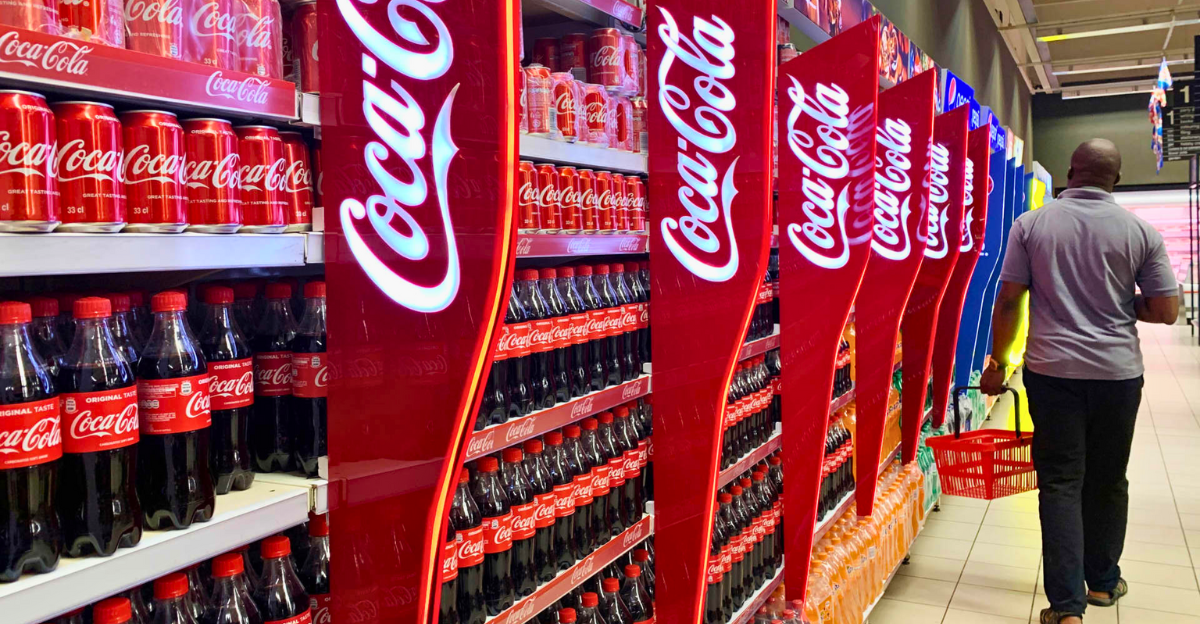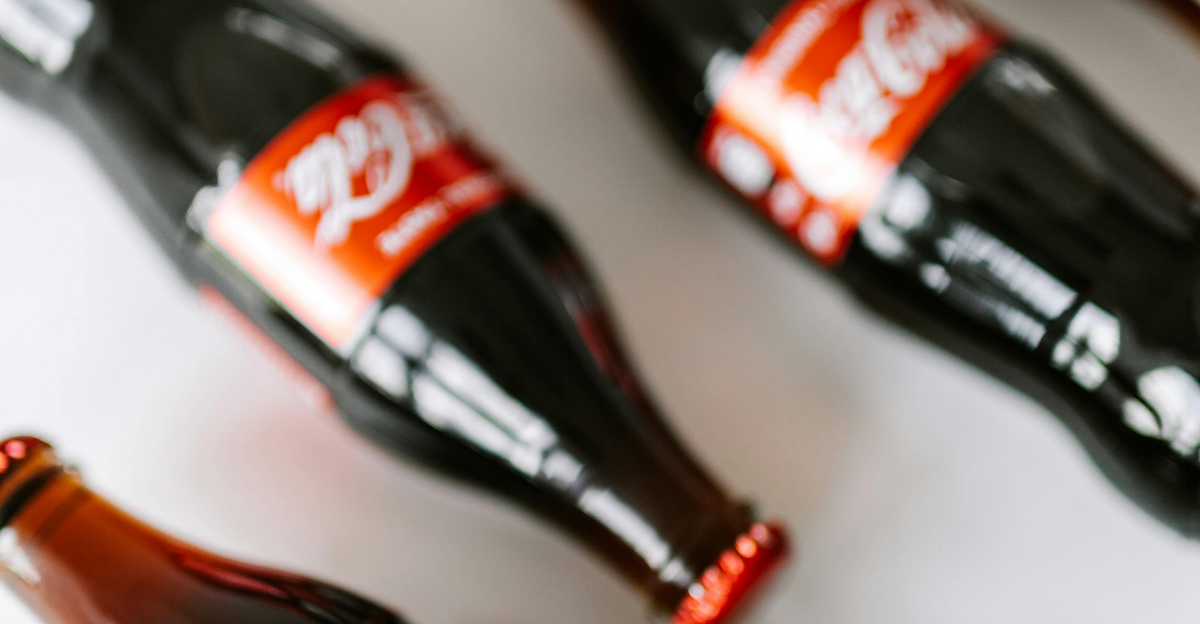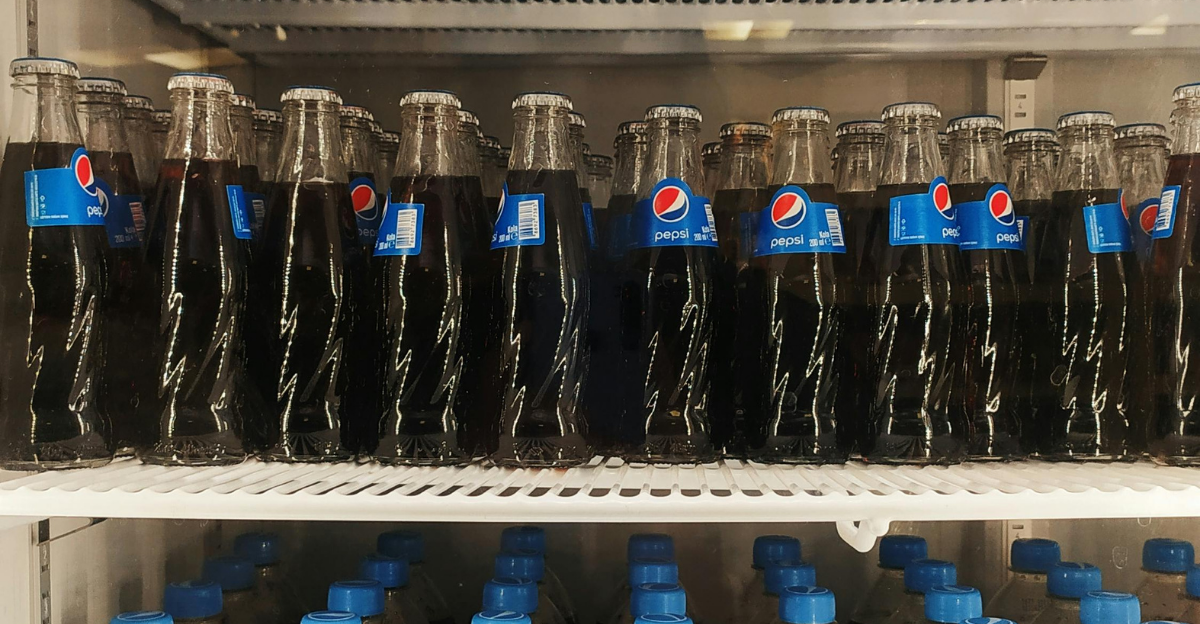
The recent launch of cane sugar sodas by PepsiCo and Coca-Cola represents a strategic shift based on factors other than nostalgia. Compared to high-fructose corn syrup (HFCS), cane sugar is thought to be a more “natural” and high-end sweetener. It satisfies changing consumer demands for ingredient transparency and wellness without sacrificing distinctive flavor profiles. In a soft drink market that is experiencing growth stagnation and growing health consciousness, this move gives both brands a distinctive differentiation vector.
Crucially, cane sugar sodas are a vehicle that combines innovation and tradition in an effort to draw in new markets that are yearning for genuineness and reengage lapsed customers. The change also represents a recalibration of the cultural narrative, with “real” ingredients being embraced as a mark of heritage and quality.
The Historical Background of Cola Sweeteners

Coca-Cola’s original formula, which dates back to the late 19th century, called for cane sugar. Economic efficiencies in the United States prompted the late 20th century shift to HFCS, but this change left a long-lasting perception gap between the U.S. formula and “original” Mexican Coke made with cane sugar.
Similar changes occurred with Pepsi as well, although historically the company has benefited from sweeter profiles and brand associations with youth culture. After decades of relying on artificial sweeteners, the return of cane sugar sodas gives these brands a tangible connection to their roots and nostalgia.
Market Trends Influencing Sodas Made of Cane Sugar

The market for premium soda is expanding as consumers look for a balance between indulgence and wellness. Data reveals a startling 14% rise in the number of zero-sugar Coke varieties sold worldwide, demonstrating that while health trends are changing consumer preferences, there is still a strong desire for real sugar substitutes.
Because “natural” and “traditional” labels evoke cognitive biases associated with purity, tradition, and quality, cane sugar sodas capitalize on consumers’ desire for premiumization. This trend aligns with a larger global wellness movement that promotes both taste innovation and ingredient sourcing transparency.
The Psychology of Consumers Regarding Cane Sugar

The marketing of cane sugar appeals to strong emotional and cognitive responses, such as nostalgia, authenticity, and healthfulness. According to cognitive psychology, consumers associate cane sugar with being “natural” and “less processed,” despite the biochemical equivalency to HFCS. Because of the halo effect this association creates, premium pricing and perceived indulgence are justified guilt-free.
By appealing to enduring emotional bonds between generations, nostalgia marketing brings back memories of “classic Coke” moments. It also uses a paradoxical “real indulgence” framework to counteract contemporary health pressures. In terms of strategy, this capitalizes on the ambivalence that many consumers experience between seeking pleasure and being health-conscious, establishing a psychological sweet spot that can strengthen brand loyalty and encourage trial across demographics.
Economic and Geopolitical Consequences

The revival of cane sugar in American sodas highlights intricate trade relationships and economic changes in the hemisphere. Potential trade partnerships and economic stimulation for exporting nations are presented by the growing U.S. imports of cane sugar from Mexico and Brazil, the world’s largest producer. Given the continued importance of global supply chains, this action also runs counter to “America First” policies.
From a strategic standpoint, this change may improve relations with Latin American producers on a diplomatic and economic level, spurring supply chain expansions and agricultural investment. Theoretical frameworks of comparative advantage and global value chains are reflected in the economic stimulus in these regions, making Pepsi and Coca-Cola unintentional participants in larger geopolitical economic realignments.
Extreme and Contrarian Viewpoints

Although health advocates advocate for consuming less sugar, this shift to cane sugar threatens the dominance of the zero-sugar market. Even though the use of artificial sweeteners has increased (14% in Coke Zero), going back to cane sugar could cause health purists to react negatively. This, on the other hand, might appeal to a different subculture that strongly disapproves of artificial ingredients as harmful or unnatural.
By redefining soda as a cult indulgence rather than a mass-produced, daily beverage, this polarizing effect may create niche loyalty. Similar to craft beer’s market disruption, this unconventional strategy may financially realign brand equity and profit pools in favor of high-end, artisanal experiences, demonstrating how embracing legacy ingredients can paradoxically innovate a category.
Unexpected Combinations of Different Industries

There are interesting connections between the cane sugar soda trend and the domains of sustainability, agriculture technology, and gastronomy. Technologically savvy consumers who demand social and environmental accountability may be drawn to innovations like transparent blockchain supply chains for cane sugar. In order to revitalize the appeal of traditional cola, cross-industry collaborations with chefs or mixologists transform cane sugar sodas into fine dining experiences by utilizing mixology as a lifestyle platform.
Expanding into functional beverages that contain cane sugar and natural ingredients (like prebiotics or botanicals) could also help soda break into wellness niches by creating a hybrid product category that combines indulgence with purported health benefits.
Answers to Health and Market Issues

Health criticisms are not being ignored by either company. They balance consumer desires for indulgence and wellness by adding cane sugar to their portfolios along with zero- or low-sugar products. Health concerns are lessened by new labeling that emphasizes open sourcing and education about moderate consumption. To maximize flavor and calorie content, reformulations also combine natural sweeteners like stevia with cane sugar.
In order to precisely segment markets and satisfy growing consumer demands for “better-for-you” products without sacrificing iconic formulas, they strategically employ multi-brand portfolios. This portfolio strategy reduces risk and expands consumer reach across a range of tastes and health-conscious demographics.
The Effect on Finances and the Premium Pricing Approach

Due to more expensive raw materials and changes in the supply chain, the introduction of cane sugar sodas is anticipated to raise unit costs, making it challenging to combat inflationary pressures and consumer budgetary restrictions. However, Pepsi and Coca-Cola use premium pricing that is supported by ingredient transparency and perceived quality to seize higher-margin categories in the stagnant soda market.
According to industry analysts, these products could boost profitability even if volume growth slows down because premium sodas continue to attract devoted niche customers who are prepared to pay higher prices. This strategy is similar to luxury brand strategies that prioritize exclusivity and brand equity over mass-market reach.
Storytelling for Brands and Cultural Relevance

Strong storytelling platforms provided by cane sugar sodas enhance brand heritage and authenticity, two critical aspects of contemporary marketing psychology. Stories that emphasize unique formulas, handcrafted manufacturing techniques, and environmentally friendly sourcing strengthen the emotional bonds with customers.
In a time of mass production and artificiality, these sodas are positioned as symbols of “realness” due to their cultural resonance that transcends beverage consumption into lifestyle and identity. Leveraging such narratives creates multifaceted brand value beyond product taste and revitalizes brand loyalty, particularly among Gen Z and millennials who value ethical and authentic consumption.
Cascades of Innovation in the Drink Sector

The cane sugar projects of Pepsi and Coca-Cola spark larger innovation cascades in soft drinks and related industries. Industry-wide reformulations are being forced by competitors like Dr Pepper Snapple, Monster, and Red Bull, who actively assess “natural sugar” options. Traditional product positioning becomes more difficult as a result of this cascading effect, which speeds up the market shift toward perceived naturalness.
Such cascades are a prime example of the disruptive innovation theory, which holds that by embracing emerging consumer demands, incumbents can cause whole industry shifts. The interdependence of consumer preferences and global production networks is demonstrated by the ripple effects, which also have an impact on supply chain ecosystems and agricultural commodity markets.
Effects on Global and Emerging Markets

Since cane sugar is still a popular sweetener in developing regions like Southeast Asia and Latin America, the trend of cane sugar soda is significant. These areas may benefit from increased export prospects as a result of the U.S. shift, which would spur economic expansion and agricultural advancement. Additionally, consumers in emerging markets might view cane sugar sodas as aspirational symbols associated with high-end Western brands, which would increase demand and brand loyalty.
With large corporations serving as conduits for both consumption and global economic integration, this dynamic reflects the dual nature of globalization: economic opportunity and cultural influence.
Sustainable Development and Moral Issues

Cane sugar production raises labor and sustainability issues, such as water use, land clearing, and fair wages, despite its premium positioning. To maintain brand trust, Coca-Cola and Pepsi must proactively address the criticism they receive. Brands can protect their reputations by implementing transparent certifications and sustainable sourcing initiatives.
Investing in community involvement and renewable farming methods can turn possible liabilities into brand assets, bringing luxury goods into line with rising consumer demands for ethics and corporate responsibility, which have a greater and greater impact on purchasing decisions.
Nostalgia’s Contribution to Market Revitalization

A decisive factor reviving cola consumption is nostalgia; in an increasingly complicated digital world, cane sugar evokes “simpler times” and genuine experiences. This emotional marketing makes use of psychological connections to early life and family times that are typically connected to drinking cola. Emotional brand loyalty is strengthened and willingness to pay premiums is increased by nostalgia.
Successful revival campaigns in other food and beverage industries serve as examples of how product innovation based on emotional resonance can offset broader category declines.
Possible Hazards and Market Difficulties

Despite hopeful forecasts, there are risks associated with this cane sugar shift, such as upsetting health-conscious consumers because sugar’s detrimental qualities are undeniable. Higher prices could curb broader market penetration.
In addition, there is the logistical risk of supply chain interruptions due to agricultural shocks and geopolitical unrest, which could compromise steady product availability. It is also a high-stakes gamble to balance heritage and health trends because if consumers are not sufficiently informed about the differences between cane sugar and HFCS, differentiation effects may be blunted.
The Model of Triple Hedging

The launch of cane sugar soda is a prime example of a “triple hedging” strategy: diversifying the source of sweeteners to mitigate geopolitical supply chain risks, hedging against flat soft drink demand, and hedging consumer segmentation between health and indulgence. By using several contingency layers to future-proof market positioning, this model maximizes risk management.
Setting a standard for CPG industries navigating intricate market disruptions, this sophisticated approach demonstrates a high degree of strategic foresight by striking a balance between innovation, tradition, and operational agility.
Long-Term Effects on Market Share and Brand Loyalty

By encouraging trial among health-conscious indulgence seekers and reviving emotional attachment, providing cane sugar options may eventually increase customer lifetime value. In the premium soda market, it can establish niche monopolies that shield Pepsi and Coca-Cola from smaller “better-for-you” brands and the decline of private labels.
As diversified portfolios encompass a wider range of preferences and values, this differentiation may stabilize or even increase market share. As a result, this approach goes beyond immediate volume targets and forms the basis for strong, long-lasting brand leadership.
The Coke Phenomenon in Mexico

“Mexican Coke,” a cane sugar variety offered in glass bottles in the United States, is a prime example of the consumer’s passion for natural sweeteners and high-end packaging. Aficionados cite superior taste and authenticity as reasons for its cult status despite its higher price.
This phenomenon validates the rollout of cane sugar as a national product strategy by indicating consumer willingness to pay for perceived quality and heritage. Mexican Coke’s success serves as empirical proof that, when authenticity and narrative are effectively communicated, consumer preferences can triumph over price sensitivity.
Conclusion

The launch of cane sugar sodas by Pepsi and Coca-Cola is a complex strategic move. By innovating within heritage frameworks, utilizing psychological and cultural narratives, navigating intricate supply chains and geopolitical realities, and anticipating future market evolutions in premiumization and health, it protects legacy brands.
Even though there are still obstacles to overcome, this action demonstrates a unique combination of visionary bravery and brutal realism, protecting market positions while also opening up new growth avenues. Cane sugar soda is a bold statement that reaffirms the relevance of these iconic brands in a changing consumer landscape that is torn between tradition and change, rather than merely a new product innovation.